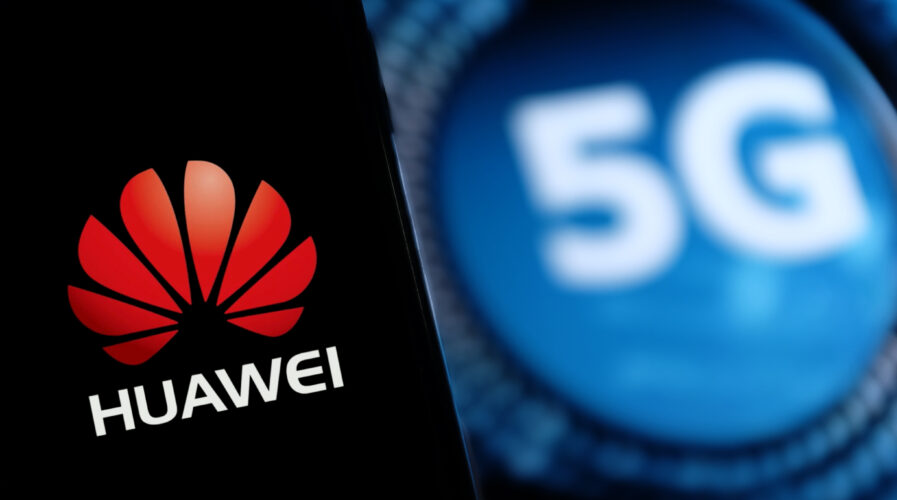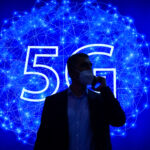
According to Huawei, 5.5G will be an evolution of 5G that will create a better, more intelligent society.(Source – Shutterstock)
The time has come for Huawei 5.5G, the next generation of connectivity
- Huawei unveiled the 5.5G iteration of 5G technology as well as the industry’s five to 10-year innovation roadmap.
- The six features of 5.5G that brings new value for digital life and development.
Although some nations have yet to experience 5G or are in the midst of deploying the network, Huawei has already advanced to the next level and has introduced the next-gen connectivity, 5.5G.
David Wang, Executive Director of the Board and Chairman of the ICT Infrastructure Managing Board of Huawei, gave a keynote address at the Win-Win·Huawei Innovation Week called, “Innovation, Lighting up the 5.5G Era.” Wang discussed the industry’s innovation strategy for the following five to ten years as well as the company’s designation of the next iteration of 5G technology, 5.5G.
“Looking ahead to 2025, the sheer diversity and magnitude of network service requirements will create huge new market potential. We’re here to discuss these opportunities with operators and industry partners, and explore the innovations we need to help pave the way for 5.5G,” said Wang.
Huawei first proposed 5.5G at the 11th Global Mobile Broadband Forum in 2020, and F5.5G (or fixed 5.5G) at the Global Analyst Summit in April of this year. New concepts and best practices have been percolating in the industry ever since.
Six features of 5.5G – the next-gen of connectivity
So what really is 5.5G? According to Huawei, 5.5G will be an evolution of 5G that will create a better, more intelligent society. The following are the six 5.5G features that will enhance connectivity.
- 10 Gbps user experience: 5G will provide a 10 Gbps experience through MIMO technology, which boasts greater bandwidth, greater spectrum efficiency, and higher-order modulation. F5.5G will provide a 10 Gbps experience everywhere thanks to next-generation technologies including FTTR, Wi-Fi 7, 50G PON, and 800G.
- Going beyond connectivity: Sensing will also be a part of 5.5G, which will open up a wide range of new scenarios and applications. In order to support new service scenarios, such as industry private networks, industrial field networks, and new calling, 5.5G core networks will redefine architectures and underlying technology.
- Enabling diversified applications: Through chip engineering and comprehensive peer-to-peer interconnection topologies, computer architectures will be redesigned in the 5.5G era to boost computing efficiency by 10- fold.
- Breaking through existing limits in storage architecture: Data-centric hardware and software architecture, along with a variety of data application acceleration engines, will enable future storage to 10- fold increase storage performance.
- Making L4 highly autonomous driving networks (ADNs) a reality: ADNs have emerged as a common industry objective. The 5.5G era will see widespread use of new advancements like compression algorithms for hundreds of network indicators and unknown defect identification using AI foundation models.
- Increasing energy efficiency: Huawei has developed cutting-edge solutions for green sites, green networks, and green operations to boost network capacity and lower energy consumption per bit. In the 5.5G era, these solutions will strengthen operators.
“As we move towards the 5.5G era, all industry players need to work together to bring standards to maturity and cultivate a thriving industry,” added Wang.

(Source – Huawei)
What 5.5G means for other countries
What would the launch of 5.5G entail for nations that restrict Huawei from deploying 5G in their nation?
In various countries, Huawei Technologies is subject to limitations on business contracts, security audits, product bans, and opposition to projects involving 5G wireless networks. Many nations assert that the firm may have designed its products with security flaws that the Chinese government may use for espionage.
The use of equipment from Huawei Technologies Co. Ltd. in its 5G networks has already been restricted by a number of countries, including the UK, US, Australia, Canada, and New Zealand.
Huawei is reportedly willing to establish no-spy agreements with governments, including Britain, despite the ban on their technology, according to the chairman of the Chinese telco company, amid pressure from the United States on European nations to avoid the company due to espionage concerns.
In light of this, no one is currently catching up to 5.5G, and it appears that Huawei is the one setting the standard for next-generation network connectivity and will keep innovating. Some nations that have chose Huawei for their 5G network deployment are nonetheless moving forward with Huawei as a potential or confirmed choice for 5G wireless network projects and related infrastructure despite the ban concerns.
At the same time, it is also important to note that Huawei and several other tech companies are also working towards the deployment of 6G technologies, although many industry analysts feel that this may still be about a decade away to be a reality.
Either way, Huawei is leading the field and the rest of the world is going to have to start playing catch up with the tech company.
READ MORE
- Ethical AI: The renewed importance of safeguarding data and customer privacy in Generative AI applications
- How Japan balances AI-driven opportunities with cybersecurity needs
- Deploying SASE: Benchmarking your approach
- Insurance everywhere all at once: the digital transformation of the APAC insurance industry
- Google parent Alphabet eyes HubSpot: A potential acquisition shaping the future of CRM


